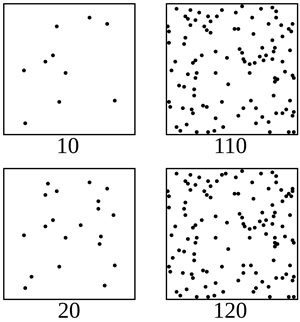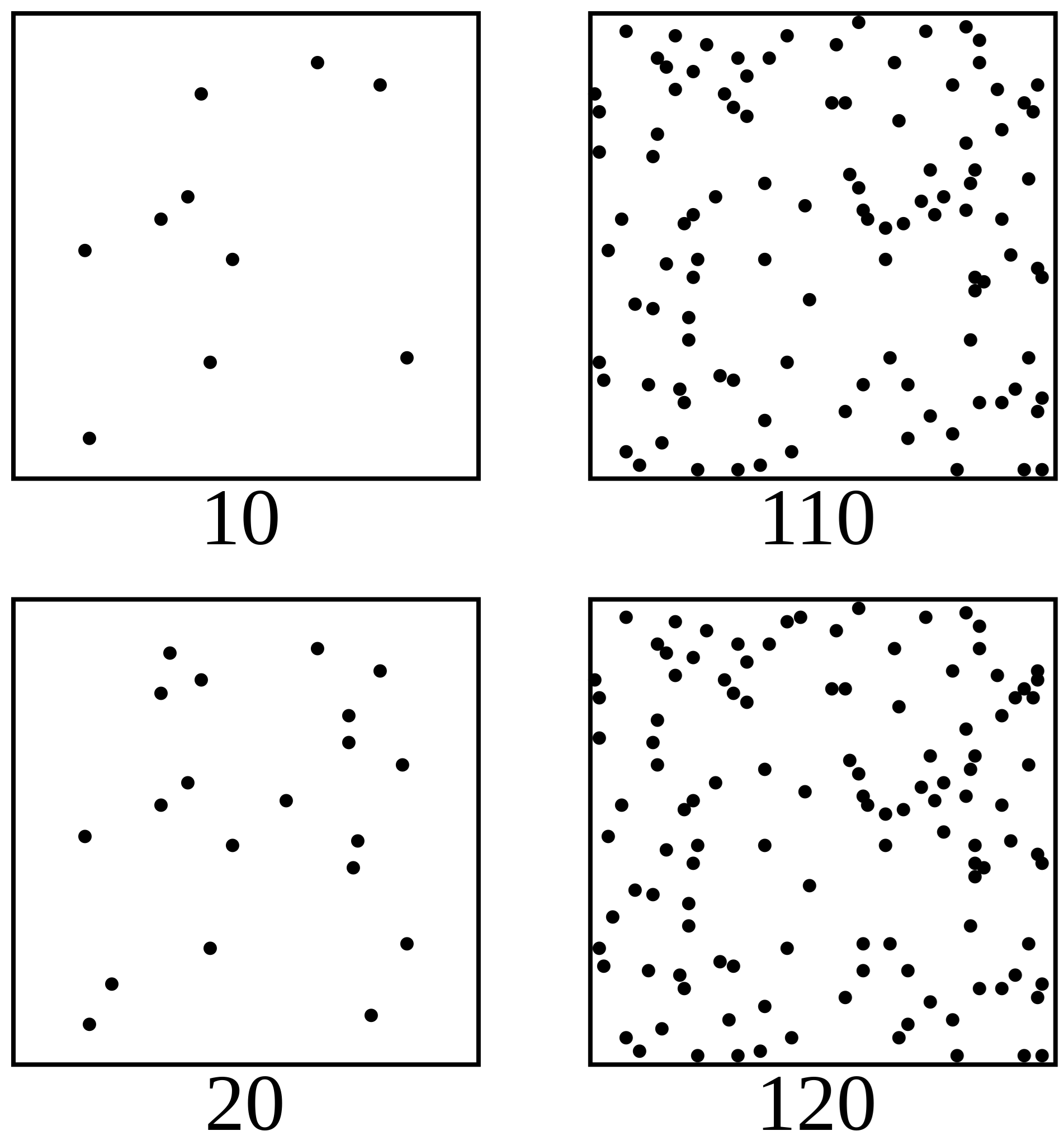Don’t Expect Exponential: Churches and Salaries Grow Logarithmically

The pitch is usually simple: “If everyone invites three people, our church will grow exponentially.” Some churches adopt a more realistic “each one, bring one” model. Regardless of the exact words, churches usually set growth goals based on the assumption Jesus taught a “multiplication model,” which always yields exponential growth.
While short-term exponential growth may be possible, ChurchSalary’s research indicates that sustainable, real-world growth almost always follows a logarithmic (or logistic) curve as new members become harder to attract and assimilate as church organizations become increasingly complex. This logarithmic trend impacts not just churches but salary growth for pastors as well.
Even the best methods at bypassing this trend—church planting and/or multisite churches—will inevitably encounter constraints.
Two trends
If you analyze the relationship of church size to average senior pastor salary as well as to the frequency of congregations, two logarithmic (or power) growth curves emerge.
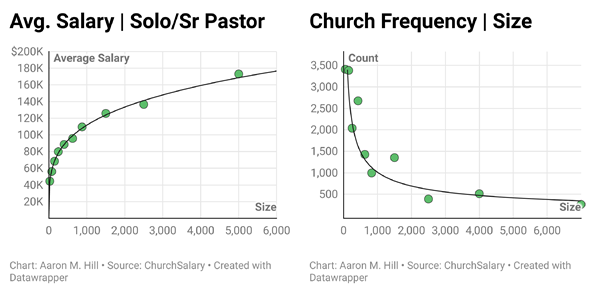
What is happening here? And what can these curves tell us about growth and staffing in the church?
Three types of growth
There are three basic types of growth.Like every good sermon, we are condensing information here. Technically, there are a host of different mathematical formulas that predict or explain growth. We will discuss some of these other types of growth below.
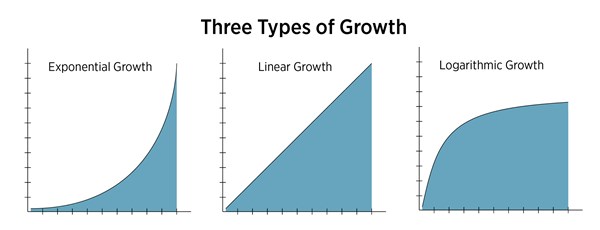
Exponential growth starts slow, then rapidly increases.
During the pandemic, scientists explained that the Omicron variant had a terrifying growth rate or “R naught” of seven — i.e., every sick person will infect, on average, seven other people. Despite these predictions, the infection rate of each variant eventually slowed down. Why?
Linear growth remains constant over time.
Linear growth is constant; it neither accelerates nor decelerates. In the real world, linear trends over a long period are hard to find. Even seemingly simple relationships such as church budget to attendance don’t follow a linear pattern.
Logarithmic growth starts fast, then slows down.
Logarithmic growth is the inverse of exponential. One way to conceive of a logarithm is that the amount of time it takes to achieve the same result grows larger. For example, the average salary of a senior pastor doubles as the church grows from 30 to 300 people, but in order for their salary to double a second time the church must grow from 300 to over 3,000 people.
While logarithmic growth may not seem very intuitive, we encounter it every day.
We experience the world logarithmically
Logarithms best explain how we perceive the world through our senses. For example, the Weber-Fechner law explains that the just-noticeable difference between two stimuli—extra weight, louder noise, brighter light—follows a logarithmic scale. This is one of the reasons why we use log scales to measure a host of natural phenomena: sound intensity (decibels), star brightness (lumens), earthquakes (Richter scale), wind intensity (Beaufort scale), mineral hardness (Mohs scale), and acidity (pH scale).
In fact, the Weber-Fechner law explains how we perceive attendance growth in the church, especially in the past. Everyone remembers fondly that year when the church grew from 100 to 200 people, but nobody notices if the congregation grows from 2,000 to 2,100 this year. Why? Even though both growth spurt added 100 souls, the first one feels 10 times more significant.
This law of logarithmic perception even explains how time appears to pass by faster and faster as we age. As Maximilian Kiener explains in this amazing visualization:
“When you are 4 weeks old, a week is a quarter of your life. By the end of your first year, a week is only a fiftieth of your life. By the time you turn 50, a whole year will be a fiftieth of your life.”
Logistic growth mixes exponential and logarithmic
In truth, size and salaries in the church probably follow what’s called a “logistic growth model”—instead of a logarithmic or power model.
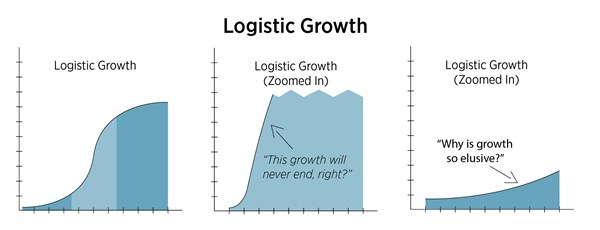
Logistic growth has nothing to do with logistics; instead, it is a combination of exponential and logarithmic change. It is marked by an initial period of slow change followed by rapid exponential expansion that transitions into slower logarithmic change. The resulting graph creates an S-shape. Depending on where you zoom into a logistic graph, if ignore the surrounding data, you can draw incorrect conclusions about your current situation.
Logistic growth models (or LGMs) are used to explain growth in a wide variety of fields: artificial intelligence, economics, tumor growth, crop yields, population growth, and more. In fact, a logistic model best explains the transmission and fatality of COVID-19 due to certain constraints.
Constraints
God designed constraints and limitations into the world: space is limited and food only grows so fast. Were it not for these constraints, Earth would long ago have become a soup of viruses and bacteria. As a result, every group of living things faces constraints in the form of limited resources, space, and time.
In the church, these constraints appear in the form of limited seats, staff, stuff (money and resources), and time. You need empty seats, a larger staff, more volunteers, and bigger budget (as well as more time) to both fuel and sustain growth.
Unfortunately, each constraint is usually coupled with other constraints. This creates a feedback loop or cycle that slows down growth in even the most dynamic churches.
- You need empty seats to grow.
- If you add new members, you need more staff to care for them.
- To hire more staff, you need more money.
- But budget growth usually lags behind numerical growth (tithing is taught or caught).
- To create more empty seats, you often need a bigger facility, which costs more money.
This feedback loop of constraints repeats for churches, ad infinitum. It can even create an expansion and contraction cycle at churches. The only “easy” way to temporarily bypass these constraints is by starting a new congregation (church planting) or a new campus (multisite churches). But even these approaches simply delay the inevitable because all churches face two additional obstacles: complexity and competition.
Complexity
As a church grows, its staffing, budget, and structures become exponentially more complex.
Every small group pastor learns in seminary that relationships increase exponentially as group size increases Technically, this is a power function, but you get the point.—X = [N * (N-1) /2]. A small group of 10 people creates 45 potential relationships—enough for a part-time Sunday School or small group leader to manage. However, a congregation of 100 people creates 4,950 potential heartaches, conflicts, and celebrations that only a full-time pastor and team of volunteers can hope to tackle. By the time a church reaches 1,000 people the number of potential relationships explodes to an eye-popping 499,500!
This formula applies to staffing as well. For example, even though you might assume managing 21 employees versus 3 is 7 times more complex, according to this formula it may actually be 70 times worse.
Complexity is also the reason why senior pastor salaries follow a logarithmic (or power) trend. As the church grows, every additional dollar must be divided into smaller and smaller slices to pay for more staff and more programs or events. This means that at certain inflection points or key complexity hurdles, senior pastors may need to sacrifice immediate salary growth for long-term church growth through staff and ministry expansion.
Competition
The final constraint that all churches face is competition for congregants. Pastors have a term for this—“sheep stealing.” Even though very few pastors set out to steal sheep, the reality is that finding, converting, and discipling lost people is exponentially harder than assimilating already-discipled believers.
Competition among churches in a community is a function of supply and demand. How many churches (supply) and how many churchgoers are present in the community (demand)? Churches situated in counties or cities experiencing population growth will find it easier to grow as a steady stream of “ready-made” churchgoers move into town. However, exponential growth rates simply are not possible in communities experiencing negative or stagnant population growth.
Closing thoughts
The same pattern of logistic growth likely occurs every time the Gospel is introduced into a new country or people group: slow initial growth that eventually explodes into rapid exponential expansion that transitions into slower logarithmic growth. The pace of growth that a church can expect will depend on where they fall in this lifecycle.
Church growth campaigns are great. Asking for a raise because you generated growth at your church is not a bad thing. Jesus is clear, “the worker deserves his/her wage.” But every church leader must bear in mind that the constraints of resources, staffing, complexity, and competition are conspiring to slow down both the growth of both your church and your salary.
Church planting (and/or multisite churches) can be fruitful and lead to rapid organizational growth because they are able to bypass some of these constraints. However, no matter how well designed they are, these new strategies cannot bypass growth constraints forever.
Future planning at your church should acknowledge and anticipate the logarithmic or logistic growth rate changes that pop up everywhere in ChurchSalary’s data—from a decrease in per person giving to key staffing hurdles.
This content is designed to provide accurate and authoritative information in regard to the subject matter covered. It is published with the understanding that the publisher is not engaged in rendering legal, accounting, or other professional service. If legal advice or other expert assistance is required, the services of a competent professional person should be sought. "From a Declaration of Principles jointly adopted by a Committee of the American Bar Association and a Committee of Publishers and Associations."
Due to the nature of the U.S. legal system, laws and regulations constantly change. The editors encourage readers to carefully search the site for all content related to the topic of interest and consult qualified local counsel to verify the status of specific statutes, laws, regulations, and precedential court holdings.

